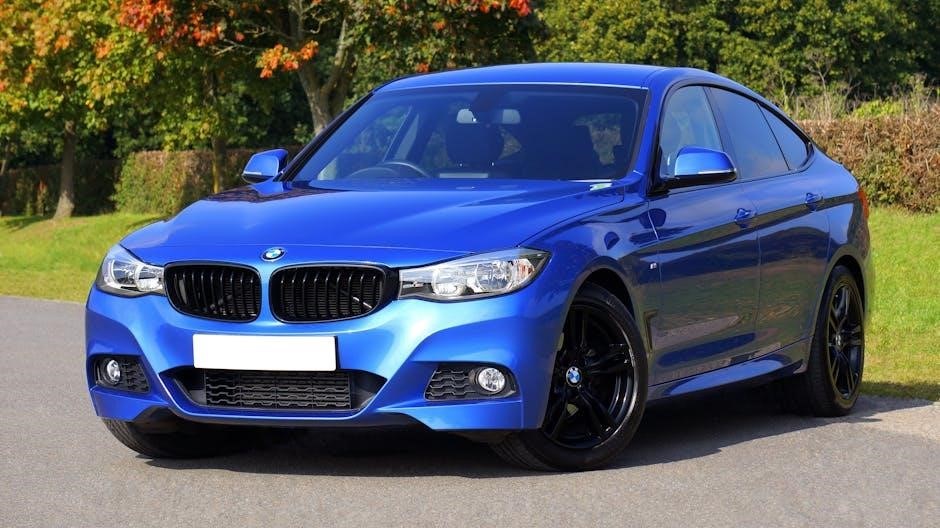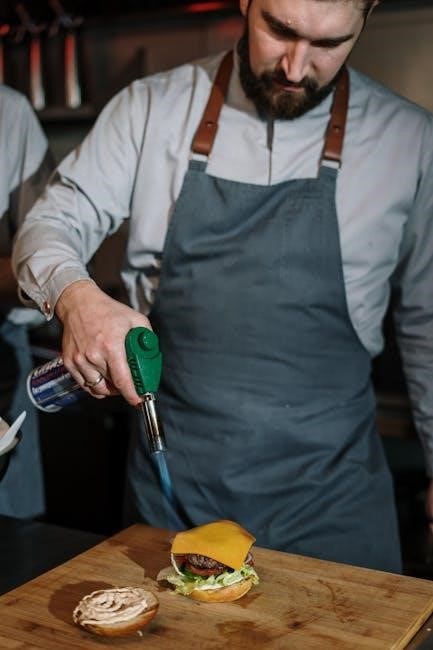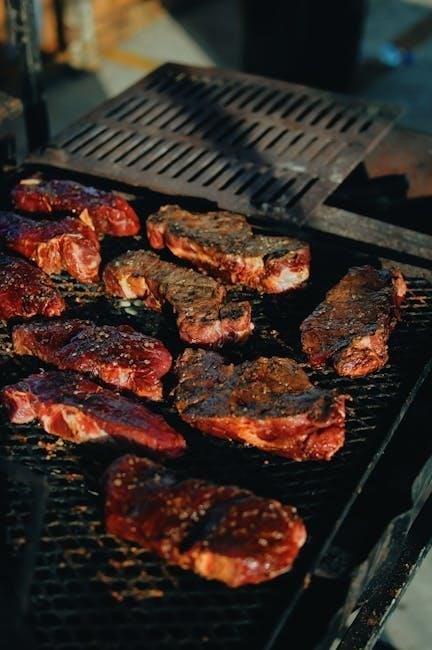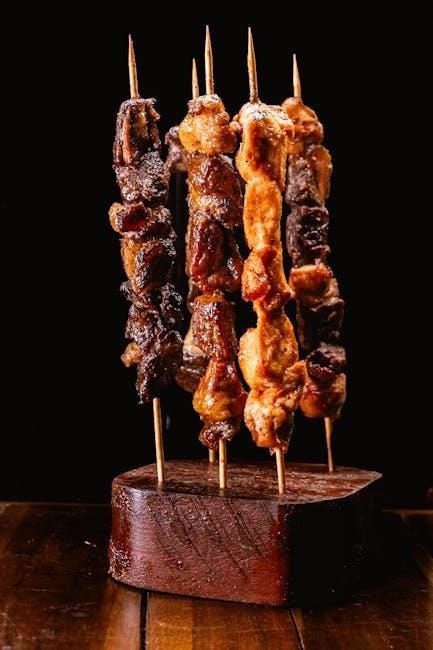Expert Grill Instructions: A Comprehensive Guide
Welcome! This comprehensive guide offers detailed expert grill instructions, covering assembly, operation, maintenance, and safety. Whether you own a gas or charcoal model, these instructions ensure proper use and longevity of your grill for successful grilling.
Expert Grill offers a diverse range of grills designed for various cooking preferences and needs. From compact charcoal grills ideal for small patios to expansive multi-burner gas grills perfect for large gatherings, there’s an Expert Grill model for everyone. Understanding the specific features and capabilities of your chosen model is crucial for optimal performance and safety.
This guide covers common Expert Grill models, including 3-burner gas grills and 24-inch charcoal grills, providing specific instructions for each type. We will delve into essential aspects such as assembly steps, burner and control panel operation, heat plate placement, and proper gas connections.
Whether you’re a seasoned grilling enthusiast or a novice, this comprehensive resource will equip you with the knowledge necessary to confidently assemble, operate, and maintain your Expert Grill. The guide also highlights crucial safety precautions to ensure a secure and enjoyable grilling experience every time you fire it up. Get ready to master your Expert Grill!

Assembly Instructions
This section provides detailed, step-by-step assembly instructions for Expert Grill models. Follow these guidelines to ensure proper construction, stability, and safe operation of your grill. Proper assembly is critical for optimal performance and longevity.
Unboxing and Parts Inventory
Upon receiving your Expert Grill, the initial step is a meticulous unboxing. Carefully open the packaging, ensuring not to damage any components inside. Remove all the parts, and lay them out on a clean, flat surface for easy identification.
Consult the parts list provided in the manual. Verify that all listed items are present. This includes the frame components, burners, control panel, heat plates, cooking grates, lid, and all necessary hardware (screws, bolts, etc.). Missing parts can hinder the assembly process and impact the grill’s functionality.
If any parts are missing or damaged, contact Expert Grill customer service immediately for assistance. Do not proceed with assembly until you have all the correct parts in good condition. Organize the hardware into labeled containers to streamline the assembly process. This step is crucial for a smooth and efficient setup; Double-checking the inventory saves time and prevents frustration later on.
Frame Assembly
Begin the frame assembly by identifying the left and right side frames, front and rear beams, and any connecting supports. Refer to your Expert Grill model’s specific assembly diagram for accurate part identification and orientation. Loosely attach the side frames to the front and rear beams using the provided screws and bolts. Do not fully tighten the hardware at this stage.
Ensure the frame is square and level before proceeding. Attach any additional support pieces, such as bottom shelves or side table supports, following the instructions in the manual. Once all frame components are connected, gradually tighten all screws and bolts, working in a crisscross pattern to ensure even distribution of pressure and stability.
Double-check that all connections are secure, and the frame is sturdy and stable. A wobbly or unstable frame can be dangerous and affect the grill’s performance. The frame should sit flat on the ground without any rocking or movement. Correct any imbalances before moving on to the next step.
Burner and Control Panel Installation
Carefully install the burners into the grill firebox, aligning them with the corresponding mounting points. Secure the burners using screws or clips, ensuring they are firmly in place and properly seated. The burner should sit level and not wobble. Connect the burner venturi tubes to the gas valves on the control panel. Ensure the connections are tight and secure.
Attach the control panel to the grill frame, aligning it with the designated mounting holes. Secure the control panel with screws, ensuring it is firmly attached and does not move. Connect the control knobs to the gas valves, making sure they turn smoothly and engage properly.
Verify that each burner ignites correctly when its corresponding control knob is turned on. Check for any gas leaks around the burner connections and control panel using a soapy water solution. If any leaks are detected, immediately turn off the gas supply and tighten the connections. Repeat the leak test after tightening.
Heat Plate and Grate Placement
Carefully position the heat plates above the burners, ensuring they are evenly spaced and cover the entire burner area. The heat plates should sit securely on their supports and not shift during grilling. These plates help distribute heat evenly and prevent flare-ups.
Place the cooking grates on top of the heat plates, ensuring they are properly aligned and stable. The grates should fit snugly within the grill’s cooking area and not wobble. Ensure the grates are clean and free from any debris or residue. Proper grate placement is essential for effective cooking and searing.
Make sure the grates are positioned correctly to allow for proper airflow and heat circulation within the grill. Uneven grate placement can lead to uneven cooking temperatures. Before grilling, preheat the grates to ensure they are hot and ready for cooking. Periodically clean the heat plates and grates to maintain optimal performance.
Lid Attachment
Carefully align the lid hinges with the corresponding mounting points on the grill body. Ensure the hinges are properly seated before inserting the hinge pins. Insert the hinge pins through the hinges and mounting points, securing the lid to the grill body. Make sure the pins are fully inserted and locked in place to prevent the lid from detaching.
Test the lid’s movement to ensure it opens and closes smoothly. The lid should swing freely without any binding or resistance. Adjust the hinge pins if necessary to achieve smooth operation. Check the lid for proper alignment with the grill body. The lid should sit flush against the grill body when closed, creating a tight seal.
A properly attached lid helps retain heat and maintain consistent cooking temperatures. Make sure the lid handle is securely attached and comfortable to grip. Regularly inspect the lid hinges and pins for any signs of wear or damage. Replace any worn or damaged parts to ensure the lid functions correctly.

Operating Instructions
Mastering your Expert Grill involves understanding safe gas connections, proper charcoal setup, and temperature control. Follow our detailed operating instructions for consistent grilling, ensuring delicious results every time, while prioritizing safety protocols.
Gas Connection and Safety
Prioritize safety when connecting your Expert Grill to a propane tank. Begin by inspecting the hose and regulator for any damage before each use. Ensure the grill is placed on a level, non-combustible surface away from flammable materials. Carefully attach the regulator to the propane tank, tightening securely to prevent gas leaks.
Before igniting the grill, perform a leak test by applying soapy water to the hose connections. If bubbles appear, tighten the connections and retest. Never use a match to check for leaks. Open the grill lid before lighting to prevent gas buildup. Follow the manufacturer’s lighting instructions precisely.
In case of a gas leak, immediately turn off the gas supply at the tank and disconnect it. Allow the gas to dissipate before attempting to relight the grill. Store propane tanks upright in a well-ventilated area, away from direct sunlight and heat sources. Regular inspection and adherence to safety guidelines are crucial for safe operation.
Charcoal Grill Setup
Setting up your Expert Grill charcoal grill correctly is essential for achieving optimal cooking results. Begin by ensuring the grill is placed on a stable, level surface away from flammable materials. Open the grill’s vents to allow proper airflow, which is crucial for temperature control. Next, prepare your charcoal or briquettes.
There are several methods for lighting charcoal. You can use a charcoal chimney starter, which is a safe and efficient way to ignite the coals without lighter fluid. Alternatively, you can arrange the charcoal in a pyramid shape and use lighter fluid, ensuring it soaks in for several minutes before lighting. Never use gasoline or other flammable liquids.
Once the coals are lit and have ashed over, spread them evenly across the charcoal grate. For indirect cooking, arrange the coals on one side of the grill, leaving the other side empty. Adjust the vents to control the temperature. A wider opening allows more airflow, increasing the heat, while a smaller opening reduces the heat.

Maintenance and Care
Proper maintenance and care of your Expert Grill are essential for its longevity and optimal performance. Regular cleaning and timely troubleshooting will keep your grill in top condition, ensuring safe and enjoyable grilling experiences for years to come.
Cleaning Procedures
Maintaining a clean grill is crucial for both food safety and optimal performance. Begin by preheating the grill for 15 minutes to burn off excess residue. Turn off the gas or let the charcoal cool completely before proceeding.
Use a grill brush to scrub the grates thoroughly, removing any remaining food particles. For stubborn buildup, consider using a grill cleaner or a mixture of baking soda and water.
Remove the heat plates and clean them with soap and water, removing grease and debris. Empty the grease tray regularly to prevent flare-ups. Wash the tray with warm soapy water.
Wipe down the exterior of the grill with a damp cloth and mild detergent. For stainless steel surfaces, use a stainless steel cleaner to maintain shine. Ensure all parts are dry before reassembling.
Regularly inspect and clean the burner tubes to ensure proper gas flow. By following these cleaning procedures, you’ll extend the life of your Expert Grill and enjoy delicious, safe meals.
Troubleshooting Common Issues
Even with proper care, grilling issues can arise. One common problem is uneven heating. This is often due to clogged burner tubes. Clean the burner tubes with a wire brush or pipe cleaner to ensure proper gas flow. Check the flame pattern; it should be consistent and blue.
If the grill won’t light, verify the gas tank has propane and is correctly connected. Check the igniter; replace the battery if needed or clean the igniter tip. A faulty regulator can also cause ignition problems. Replace if necessary.
Flare-ups are another frequent issue. Reduce flare-ups by regularly cleaning the grill and trimming excess fat from meats. Consider using a lower heat setting or moving food to a cooler area.
For temperature control issues, ensure the thermometer is accurate and properly calibrated. Check the position of the heat plates; they should be evenly distributed. Wind can also affect temperature, so position the grill accordingly.
Address issues promptly to maintain performance and safety. If problems persist, consult a qualified technician.

Safety Precautions
Grilling safely is paramount. Always grill outdoors in a well-ventilated area, away from flammable materials like wooden fences or overhanging branches. Never grill indoors; this poses a serious carbon monoxide risk.
Keep children and pets at a safe distance from the hot grill. Designate a “no-go” zone to prevent accidental burns or injuries. Never leave a lit grill unattended.
When using a propane grill, inspect the gas tank and hoses for leaks before each use. Apply soapy water to connections; bubbles indicate a leak. Tighten connections or replace damaged parts immediately.
Use long-handled grilling tools to avoid burns. Wear heat-resistant gloves when handling hot grates or adding charcoal. Be cautious when disposing of hot coals; use a metal container with a lid and allow them to cool completely.
In case of a grease fire, do not use water. Smother the flames with baking soda or sand. Turn off the gas supply if possible. Keep a fire extinguisher nearby for emergencies. Following these precautions ensures a safe and enjoyable grilling experience.
